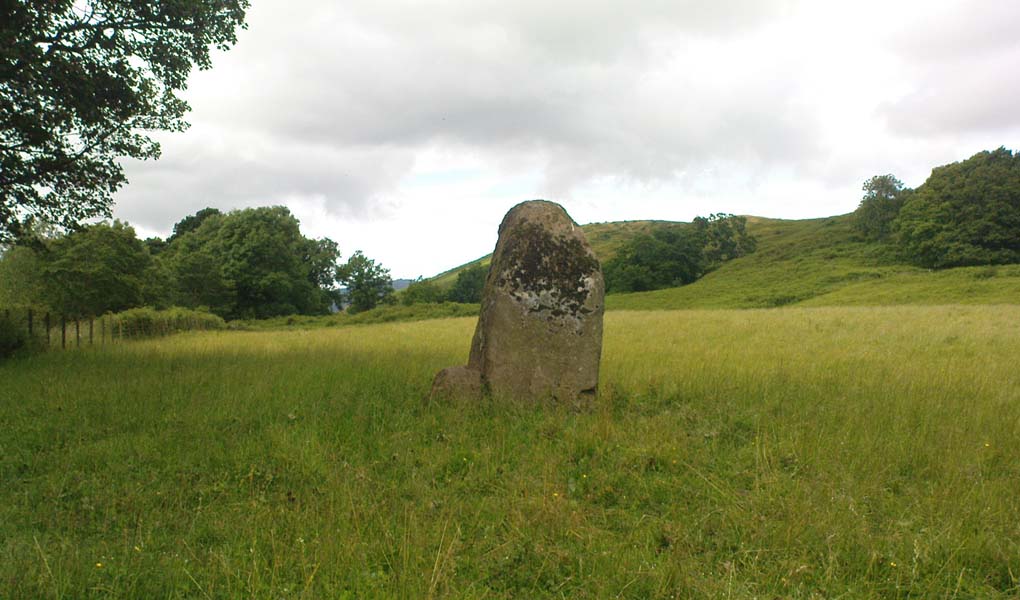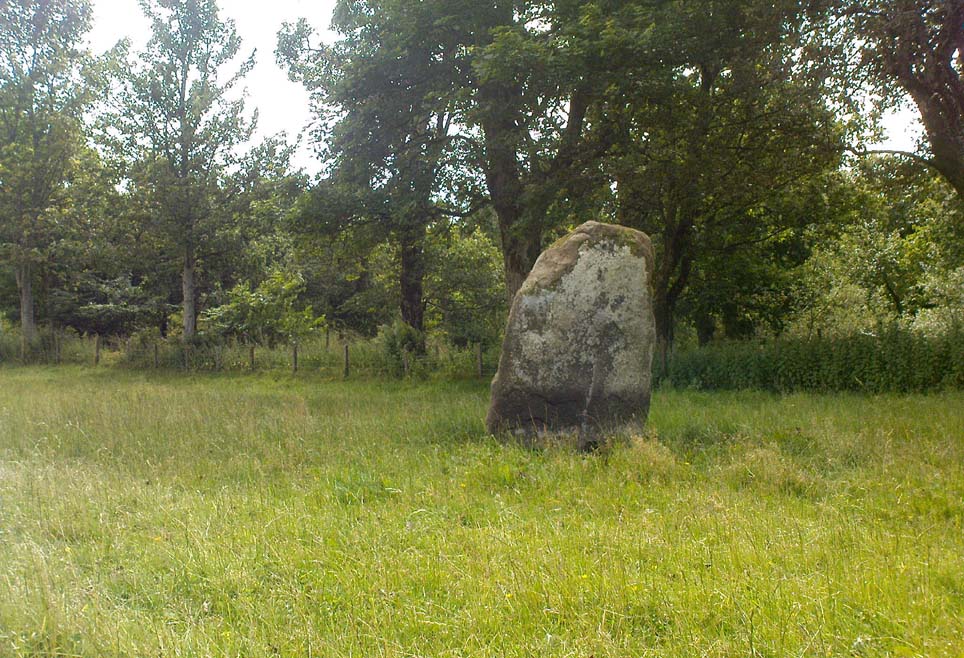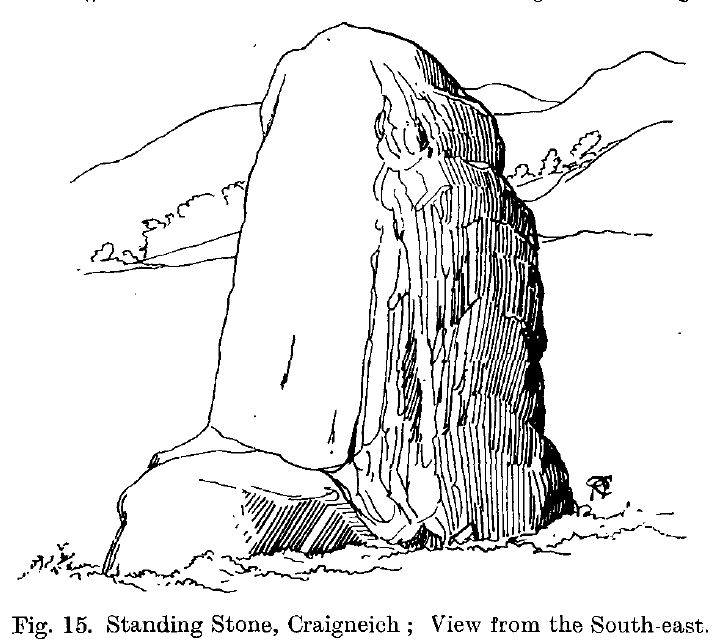Standing Stone: OS Grid Reference – NN 79225 17870
Also Known as:
- Blar an Rodhar
- Blarinroar

From Comrie town centre take the road south across Dalginross Bridge over the river, heading towards Braco, up the winding B827 road for 2-3 miles until you reach a small crossroads (you can easily miss it, so watch out!). Turn left and, about a mile on, keep your eyes peeled – either for the standing stone in the field on your left, or the dirt-track to Craigneich Farm 100 yards further on.
Archaeology & History

This is a large standing stone in a truly beautiful setting. More than six-feet tall, it stands amidst a gorgeous atmosphere just off the quiet roadside and has been all-but neglected by most archaeological surveys. Thankfully it was one of the many impressive monoliths in this district that was described in one Fred Coles’ (1911) fine surveys. Described in conjunction with the even more massive standing stones on the slopes to the south, he told:
“This Stone is one mile and a furlong SSE of the last, on the north side of the road between Straid and Shillinghill, at 514 feet above sea-level. The locality lies to the north of Aodan Mohr, which is the name given to the upper portion of Dunruchan. .. Its base is of an extremely irregular four-sided shape, having a jutting-out ledge on the south (see drawing). In basal girth it measures 15 feet 9 inches, and in height 6 feet 4 inches. The longest axis points N. 33° E.. by S. 33° W .”

Others may have once stood in close attendance, as the Chronicles of Strathearn (1896) tells how at Blarinroar (the name of the fields here) there were standing stones twenty feet tall! Cole thinks this to be an error based on the megaliths of Dunruchan, half-a-mile to the south. On the other side of the road from here, in the hedgerow, lies a fallen stone covered in ages of moss.
The now singular upright has been linked, albeit tentatively, to the Dunruchan megaliths as part of a possible stone row (Burl 1993; Thom 1990), but this seems very unlikely.
In Edward Peterson’s (1996) survey of Pictish monuments, he thought the Craigneich stone may have been important to the Seal tribe in ages gone by, as he says there are some Pictish carvings on the stone:
“The heads of two seals are relatively clear, positioned near the centre of this stone. Not so clear is the head of a cat at the top right hand corner, and to the immediate left is another seal head. These are only a few of the animal heads appearing on this sea/seal-god standing stone.”
More antiquarian research is obviously required here. It’s a truly superb spot!
References:
- Burl, Aubrey, From Carnac to Callanish, Yale University Press 1993.
- Cole, Fred, “Report on Stone Circles in Perthshire, Principally Strathearn,” in Proceedings of the Society of Antiquaries, Scotland, volume 45, 1911.
- Finlayson, Andrew, The Stones of Strathearn, One Tree Island: Comrie 2010.
- Hunter, John, Chronicles of Strathearn, David Phillips: Crieff 1896.
- Peterson, Edward, The Message of Scotland’s Symbol Stones, PCD Ruthven Books: Aberuthven 1996.
- Thom, A., Thom, A.S. & Burl, Aubrey, Stone Rows and Standing Stones – 2 volumes, BAR: Oxford 1990.
© Paul Bennett, The Northern Antiquarian